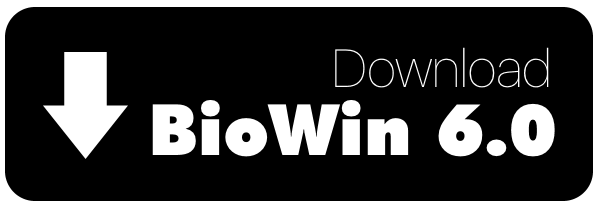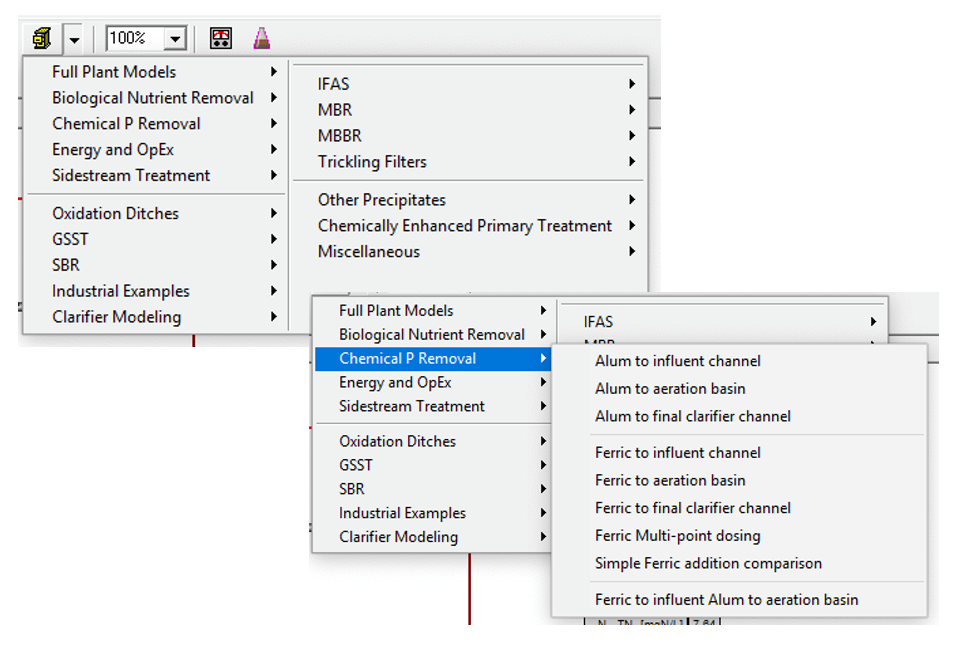The EnviroSim team is pleased to announce the release of BioWin 6.0.
New features in BioWin 6.0 can be divided into two main areas : Model Additions and Usability Upgrades. A more comprehensive description of the upgrade may be found in the "What's New in BioWin 6.0" document in printable or presentation format.
BioWin 6.0 highlights include:
Model Additions |
Usability Upgrades |

NOTE : if you get a flag like the one at right during the download process, this threat detection is a false positive. Microsoft was notified, and have updated Windows Defender. Please ensure that the definition database is version 1.295.1460.0 or greater. You can update the definition database on this web page: https://docs.microsoft.com/en-us/windows/security/threat-protection/windows-defender-antivirus/windows-defender-security-center-antivirus#definition-version. Follow the directions in the section "Review the definition update version and download the latest updates in the Windows Security app". This should allow you to proceed with the installation of BioWin 6.0.
Introduction
The BioWin Manual is provided in two forms:
- As a PDF (default install location is C:\Program Files(x86)\EnviroSim\BioWin 6.0\Manuals)
- In “Windows Help” format from within BioWin
To Use PDF
- Open it from directory above
- Or copy it to any other location of your choice (g. Desktop, My Documents)
To Use Windows Help
- Select Help > Contents & Index
- Click Help button
- Press F1 key on your keyboard (context-sensitive method; will open a relevant topic in the manual)
Example Manual reference:
For more details on topics, references to relevant sections of the BioWin Help Manual are provided
MODEL REFERENCE : Chemical Precipitation Reactions > Chemical Phosphorus Removal with Iron Salts
Model Addition – Sulfur
Extension of what has been in PetWin for several years
- Sulfide-oxidizing bacteria
- Sulfate-reducing bacteria (multiple types)
- Potential hydrogen sulfide stripping
- Iron-sulfide (FeS) precipitation
- Model iron addition for H2S
control
MANUAL REFERENCE : Model Reference > Biological/Chemical Models > Sulfur Modeling
Model Addition – Industrial Organics
Based on original Alison Baker PhD (~1994, McMaster)
- Four new state variables for industrial components
- Mixed removal pathways – stripping and/or biodegradation
- Default settings for industrial components mimic xylene, phenol, benzene, and toluene
- Biodegradation according to inhibitory Haldane kinetics
MANUAL REFERENCE : Model Reference > Modeling of Industrial Components
Model Addition – Chemical Phosphorus
New P removal mechanisms (hydrated metal oxides)
- Based on EnviroSim-sponsored research
- Extensive calibration for wastewater systems
- Overcomes weaknesses of old “WEF model” (e.g. fixed Me:P stoichiometry)
- Can have simultaneous ferric / ferrous / alum inputs
MANUAL REFERENCE : Model Reference > Chemical Precipitation Reactions > Chemical Phosphorus Removal with Aluminum Salts
Model Addition – Chemical Phosphorus
Updated P removal mechanisms (hydrated metal oxides)
MANUAL REFERENCE : Model Reference > Chemical Precipitation Reactions > Chemical Phosphorus Removal with Iron Salts
Model Addition – CEPT
Option to model colloidal COD / metal interactions
- Model can convert non-settleable colloidal COD to settleable particulate COD in the presence of hydrated metal oxides (HMO)
- Process will also reduce potential adsorption of P on HMO
- Ideal or model clarifier can then be used to mimic increased solids and BOD removal
MANUAL REFERENCE : Model Reference > Chemical Precipitation Reactions > Modeling Metal-Colloidal Coagulation Reactions
Model Addition – Iron RedOx
Option to model iron oxidation / reduction reactions
- New ferrous input (as either ferrous chloride or ferrous sulfate)
- Ferrous oxidized to ferric in aerobic environments
- Ferric reduced to ferrous in anaerobic environments
- Option to track iron-based precipitates {e. FeS and vivianite [Fe3(PO4)2]}
MANUAL REFERENCE : Model Reference > Chemical Precipitation Reactions > Iron RedOx Reactions and Precipitation of Vivianite and FeS
Model Addition – Options for P Recovery
Improved tracking of Ca2+ and Mg2+
- Previously Ca2+ and Mg2+ only available throughout the flowsheet via input of soluble influent concentrations
- Underestimated the amounts entering digesters via solids streams limiting the amounts of potential precipitates
- Model updated to include Ca2+ and Mg2+ in biomass (taken up as part of “synthesis ISS”) and influent degradable solids (XSP)
Additional sinks for P
- Vivianite formation
- Struvite formation as in previous versions of BioWin but no longer Mg2+ limited!
- Calcium phosphate precipitate (as Brushite)
- Lowers return stream soluble PO4 to levels typically observed
MANUAL REFERENCE : Model Reference > Chemical Precipitation Reactions > Precipitation of Brushite, Hydroxy-Apatite and Struvite
Model Addition – Cellulose
Cellulose tracking
- Influent unbiodegradable particulate material split into two components: cellulose and non-cellulose
- Separate COD:VSS ratios for each
- Helps to fine-tune sludge production and digester performance
- Enables modeling of cellulose recovery
MANUAL REFERENCES :
- Model Reference > Biological/Chemical Models > Activated Sludge Processes > Growth and Decay of Ordinary Heterotrophic Biomass > Stoichiometric Parameters
- Model Reference > Definition of Non-State Variables
Model Addition – SSO
New input for SSO
- State variable (CODP-XEO) for adding particulate degradable COD (g. Source Separated Organics)
- Has specific COD:VSS; added as a separate input to avoid conflicts with municipal wastewater characteristics
- Option to include N and P
- Constant or time-varying, as with any BioWin input
MANUAL REFERENCES :
- Model Reference > Biological/Chemical Models > Hydrolysis, Biological adsorption, Ammonification and Assimilative denitrification
- Model Reference > Definition of Non-State Variables
Usability Upgrade – Drawing Toolbar
- UNDO button!! Use for accidental element deletion, moving,
- Buttons for copying pipe format from one pipe to others
- Buttons for aligning flowsheet elements (vertical or horizontal centers)
- Buttons for spacing flowsheet elements evenly (vertically or horizontally)
- Buttons for flipping flowsheet element images (horizontally or vertically)
- Button for copying selected element(s)
MANUAL REFERENCE : General Operation > Main Simulator Window > Toolbars > Flowsheet Tools
Usability Upgrade – Report to Excel
- Automatic rapid generation and export of data, charts, to Excel
- Ideal for generating Mass Balance tables to use in PFDs
- Preconfigured templates are customizable
- Can incorporate “post-BioWin” calculations (g. MLVSS/MLSS, COD/BOD) using Excel formulas
- Option for including both steady state and dynamic simulation databases
- Can include BioWin charts – these are converted to Excel charts with data
- Report to Word still available
MANUAL REFERENCE : Data Output (charts, tables, reports) > Creating Project Reports > Creating an Excel Report
Usability Upgrade – Variable Naming & Sorting
- Variables and parameters renamed for improved consistency
- Allows for simpler alphabetical sorting
MANUAL REFERENCE : Model Reference > Definition of Non-State Variables
Usability Upgrade – Flowsheet Tags
Customizable element-specific information
- Information updates with simulations
- Can contain state, combined, and element-specific variables
- Can control location (above, below elements)
- Can replace flowsheet icons if desired
MANUAL REFERENCES :
- General Operation > Customizing BioWin > Customizing the Project Appearance > Drawing Board
- General Operation > Customizing BioWin > Customizing the Work Environment > Default tags
- General Operation > Managing BioWin Projects > Setting Project Options > Drawing Board Options
Usability Upgrade – Integrated Influent Specifier
Usability Upgrade – Transpose Tables
Usability Upgrade – Optional Alarms
- As part of the project options, select which alarms are active
MANUAL REFERENCE : General Operation > Managing BioWin Projects > Setting Project Options > Alarm Options
Usability Upgrade – Set All Parameters to Default
Use to upgrade older models to Version 6
Specify which parameter sets to update
MANUAL REFERENCE : General Operation > Managing BioWin Projects > Specifying Project Model Parameter Values
Usability Upgrade – Solution Densities
MANUAL REFERENCE : Model Reference > Chemical Precipitation Reactions
Usability Upgrade – Additional Flow Units
MANUAL REFERENCE : General Operation > Managing BioWin Projects > Setting Project Options > Unit System Cubic meters per hour option for smaller systems
Usability Upgrade – $ per wet tonne sludge costs
Third sludge disposal cost option added
MANUAL REFERENCE : Operating Costs in BioWin > Operating Costs > Sludge
Usability Upgrade – More Examples
BioWin Cabinet reorganized and greatly expanded with additional examples
Download BioWin 6.0
When upgrading from BioWin 5.3 to BioWin 6.0 the link below will provide you with a full installation, including the latest device drivers. Please note that this upgrade will not affect older BioWin versions (BioWin 5.3 and earlier) which are separate applications. This means that users can keep their older copies of BioWin.
PLEASE NOTE
- Annual and Academic License customers can upgrade free of charge at any time via the link above.
- Perpetual License customers who purchased after June 1, 2018 will be emailed instructions on how to electronically upgrade to BioWin 6.0 free of charge. If you have not received your upgrade email, please contact us. Customers who purchased BioWin prior to June 1, 2018 may order an upgrade here for US$3,300.You can download the full installation for BioWin 6.0 using the link below.NOTE : BioWin updater will not automatically upgrade BioWin 5.3 to BioWin 6.0. You MUST run the full installation from the link provided. Thereafter the updater will always be checking that your files are up to date. :

Other important items to note:
- The upgrade to 6.0 will not affect older BioWin versions (BioWin 5.3 and earlier) which are separate applications. This means that users can keep their older copies of BioWin.
- We are emailing the registered contact for specific BioWin serial number(s). If an organization has multiple copies or users of BioWin, we would be pleased if the registered contact can advise other users of this new version and these upgrade instructions.
Annual License Customers
Annual license customers can now upgrade to BioWin 6.0; releases and upgrades are included in the annual lease and distributed electronically. Instructions on how to electronically upgrade to BioWin 6.0 can be found here.
Perpetual License Customers
Perpetual License customers who purchased after June 1, 2018 will be emailed instructions on how to electronically upgrade to BioWin 6.0 free of charge. If you have not received your upgrade email, please contact us. Customers who purchased BioWin prior to June 1, 2018 may order an upgrade here for US$3,300.
Academic Licenses
Academic licenses can now be upgraded to BioWin 6.0; releases and upgrades are included in the annually renewed license and distributed electronically. Instructions on how to electronically upgrade to BioWin 6.0 can be found here.
Enjoy your new BioWin 6.0. We look forward to your feedback.
























